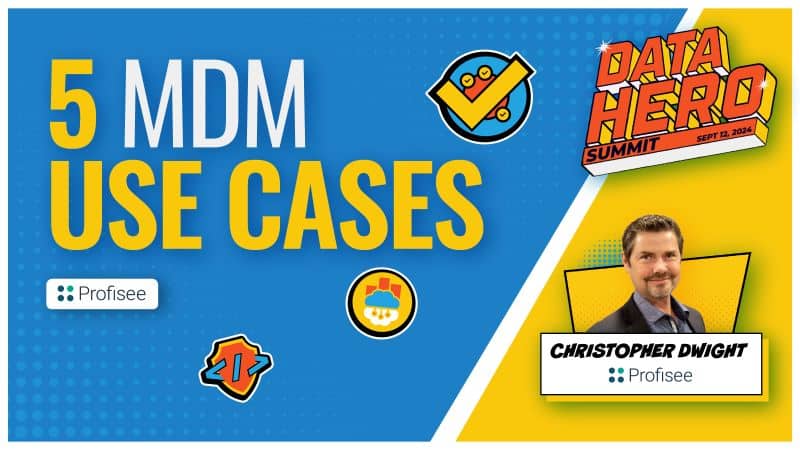When it comes to making your customer data available across your sales and marketing functions, there are many benefits that come with implementing a customer data platform (CDP). It effectively consolidates data warehouses and creates a convenient access point to change and monitor customer interactions.
While holding many different types of data, CDPs are perfect for those who might be less technical while also being easy to use for marketers, BI analysts, business users and other consumers of enterprise data from multiple sources. There is a lot to appreciate here!
In today’s marketplace, roughly 25% of CDOs/data leaders say they are responsible for leading digital transformation initiatives for their organizations.
This means that many who are fluent in the data space are calling the shots for how their business handles its critical data. While you may already have a successful CDP that works perfectly for your organization’s specific needs, it is most likely missing a crucial component. This is where master data management (MDM) comes into play.
Don’t Limit Your Data Potential
While a CDP serves as an efficient data access point, that does not necessarily ensure that the customer data is trustworthy. When inputting new customer information or editing previous records, there is always room for human error.
While a CDP does ingest first-party customer information before standardizing it into a consistent customer profile, that doesn’t account for manual inputs. In one way or another, the data can become disorganized, inconsistent or even inaccurate altogether.
Leveraging unreliable customer data only hurts your business and prevents growth. The data needs to be managed before it is accessed, much less leveraged to optimize value.
If marketers have this consolidated sandbox in which to pull customer information, it needs to be clean. MDM cleans and harmonizes customer data across multiple systems to boost your data’s quality and simplify your digital transformation.
For those reasons, it is important to apply your implementation to the data in your CDP. Do not limit the potential value of your data by completely relying on a singular platform.
DATA INSIGHTS,
DIRECT TO YOUR INBOX
Why Not Both?
As a former Gartner analyst, I have had many conversations with various IT and data leaders about this false perception that you must choose either a CDP or MDM.
My answer was always both. It does not have to be one or the other. CDPs and MDM implementations each have a laundry list of distinct benefits, so why not have the two work hand-in-hand?
CDPs are far more focused on accessibility and consolidation while MDM leans more into cleaning and unifying the data. However, the two are similar for data warehouses serving as a consolidated access point to pull data or make respective edits or inputs. With both, you are ensuring that your data quality remains strong and consistent on all fronts.
The bottom line is that both CDPs and MDM fulfill data needs across your enterprise. Sure, it depends on your specific business needs, but that can be said for a lot of things in the marketplace. In terms of launching your strategic data initiatives and the process involved, they also provide a collaborative approach with stakeholders.
Strike a Balance
If you decide to apply both to your critical data, then it is important to find a happy medium. It does not benefit you to swing too much over to one side.
CDPs and MDM allow your organization to be more agile and flexible with your customer data. While CDPs give marketers more data control, it does not replace data warehouses or the capabilities that come with MDM.
The two work well together so that you can make the most of your data and substantially grow your business.
Don’t Take My Word for It: Thoughts from a CDP Executive
While remaining passionate about companies reaching their full strength with MDM, I want business professionals to realize their potential and unlock the value of their data.
For this reason, I host the CDO Matters Podcast where I sit down with thought leaders to discuss how organizations like yours can become more data-driven.
And in a recent episode, I sat down with the President and COO of BlueConic, Cory Munchbach, for an in-depth discussion of how MDM complements a CDP, allowing organizations to better leverage their critical data and grow their business based on a trustworthy data foundation.
Cory and I discussed the current market CDPs, how they help “activate” customer data throughout the organization and how CDOs can directly benefit when their organizations effectively use CDPs and MDM in concert to achieve real business objectives.
Listen to the full episode for more information.
Malcolm Hawker
Head of Data Strategy @ Profisee
Easily consolidate customer data

Malcolm Hawker
Malcolm Hawker is a former Gartner analyst and the Chief Data Officer at Profisee. Follow him on LinkedIn.












